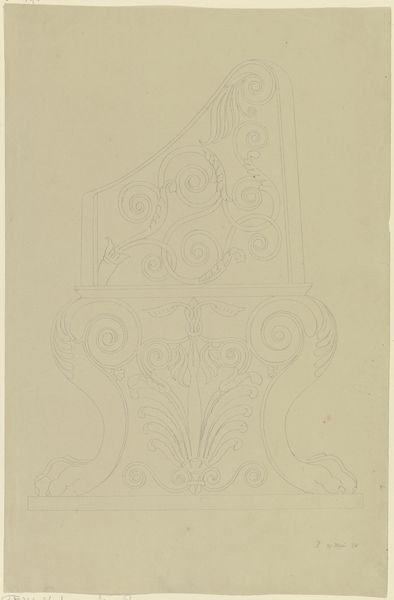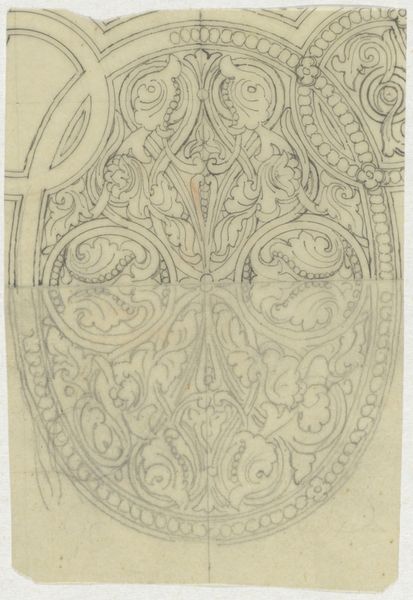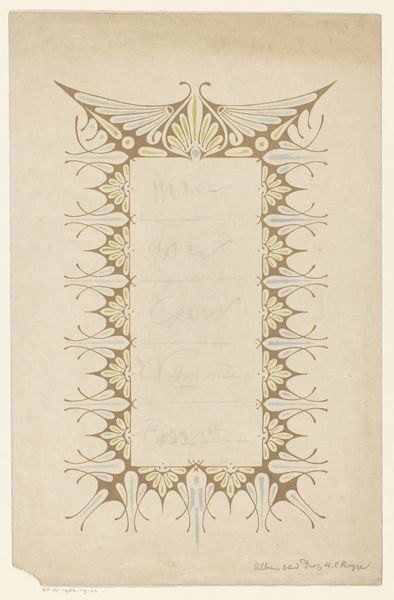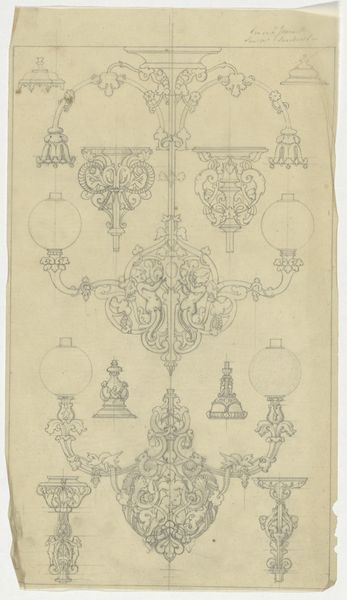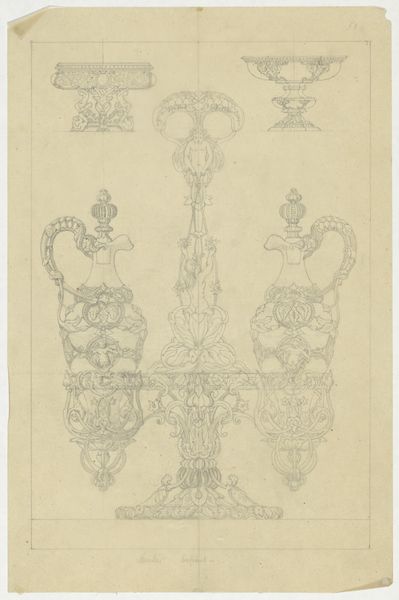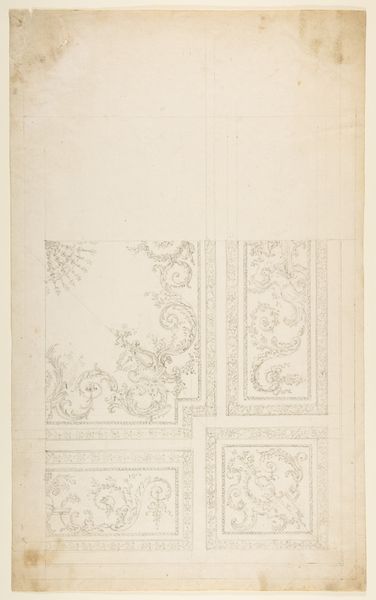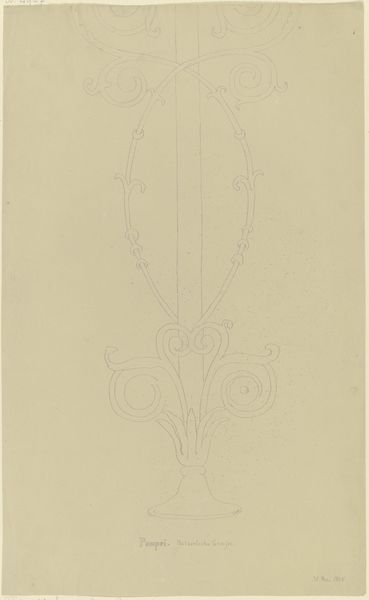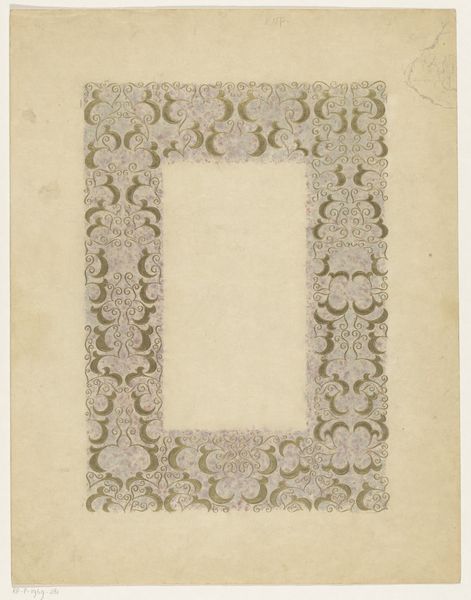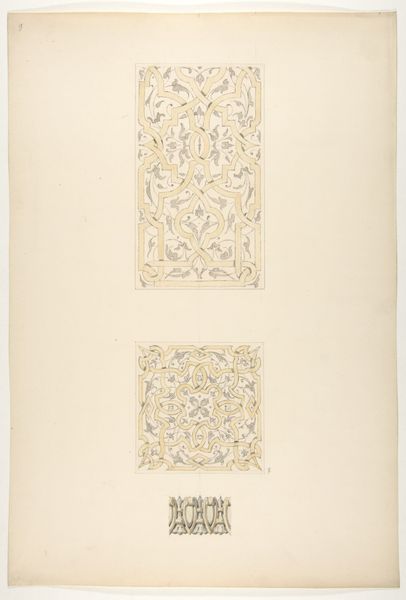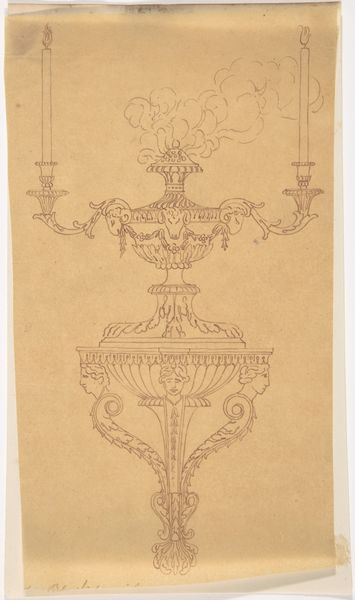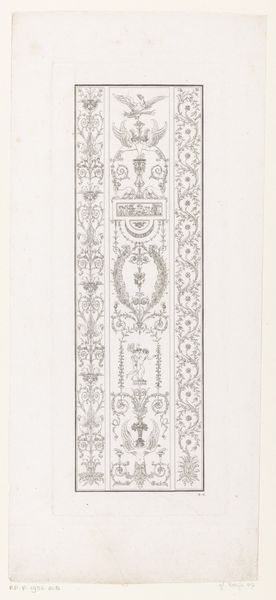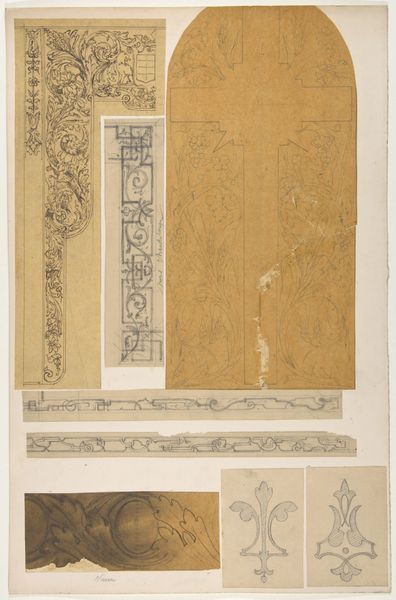
Design for a panel ornamented with strapwork and rinceaux 1830 - 1897
0:00
0:00
drawing, ornament, print, paper
#
drawing
#
ornament
# print
#
pattern
#
paper
#
geometric
#
pattern repetition
#
decorative-art
Dimensions: Overall: 14 3/4 x 10 3/8 in. (37.4 x 26.3 cm) image: 12 5/8 x 6 1/4 in. (32 x 15.9 cm)
Copyright: Public Domain
Curator: Looking at this drawing, I immediately think of serene geometry meets botanical whimsy. It’s incredibly calming, right? Editor: Indeed. The work before us is entitled "Design for a panel ornamented with strapwork and rinceaux". Jules-Edmond-Charles Lachaise created this drawing on paper sometime between 1830 and 1897, so we can see the historic roots of ornament influencing artistic imagination. This decorative sketch is part of the collection at the Metropolitan Museum of Art. Curator: "Strapwork and rinceaux"... those sound like characters in a fairy tale! Seriously, though, the intertwining lines have such an art nouveau feel. Like stepping into a secret garden...or maybe a particularly fancy maze. I am fascinated with that blend of rigid forms against nature, which, come on, isn’t all that rigid to begin with. Editor: This composition highlights the intersection of natural and geometric forms. The "strapwork," those interlacing bands resembling leather straps, contrasts beautifully with the "rinceaux," those stylized, leafy ornaments. Viewing it now, post-structuralist theory helps us to appreciate its intricate interplay between rigidity and organic fluidity. Think of how this design functions as both a rigid structure and as an opening for natural elements. Curator: I totally get that. But imagine it as, say, a headboard! Instant good vibes. Or, stretched into wallpaper… it would be like sleeping inside a calming equation, that I am somehow still solving for what will be and for what must always change! I appreciate its imperfections. Editor: Placing Lachaise’s work within a larger discourse, one could view the geometric precision alongside the free-flowing rinceaux, and read that dialectic through gender. Are we to consider rigid structure masculine, against the softer flow of feminine forms? What sociopolitical dimensions are embedded within seemingly innocent ornamental sketches? These are relevant questions, for instance, when thinking about how architectural spaces control gendered experience. Curator: Whoa, going deep. For me, it's just a chill-inducing doodle... which is what design can achieve. I think what I respond to most is how even in its restrained palette and precision, it feels so free. Thanks to it, now, I'll see if my doodles ever come to be considered as a kind of opening. Editor: Well, isn't that what we all wish for as creative agents, that some thing we craft becomes, one day, a bridge. Thank you for illuminating some of those.
Comments
No comments
Be the first to comment and join the conversation on the ultimate creative platform.
